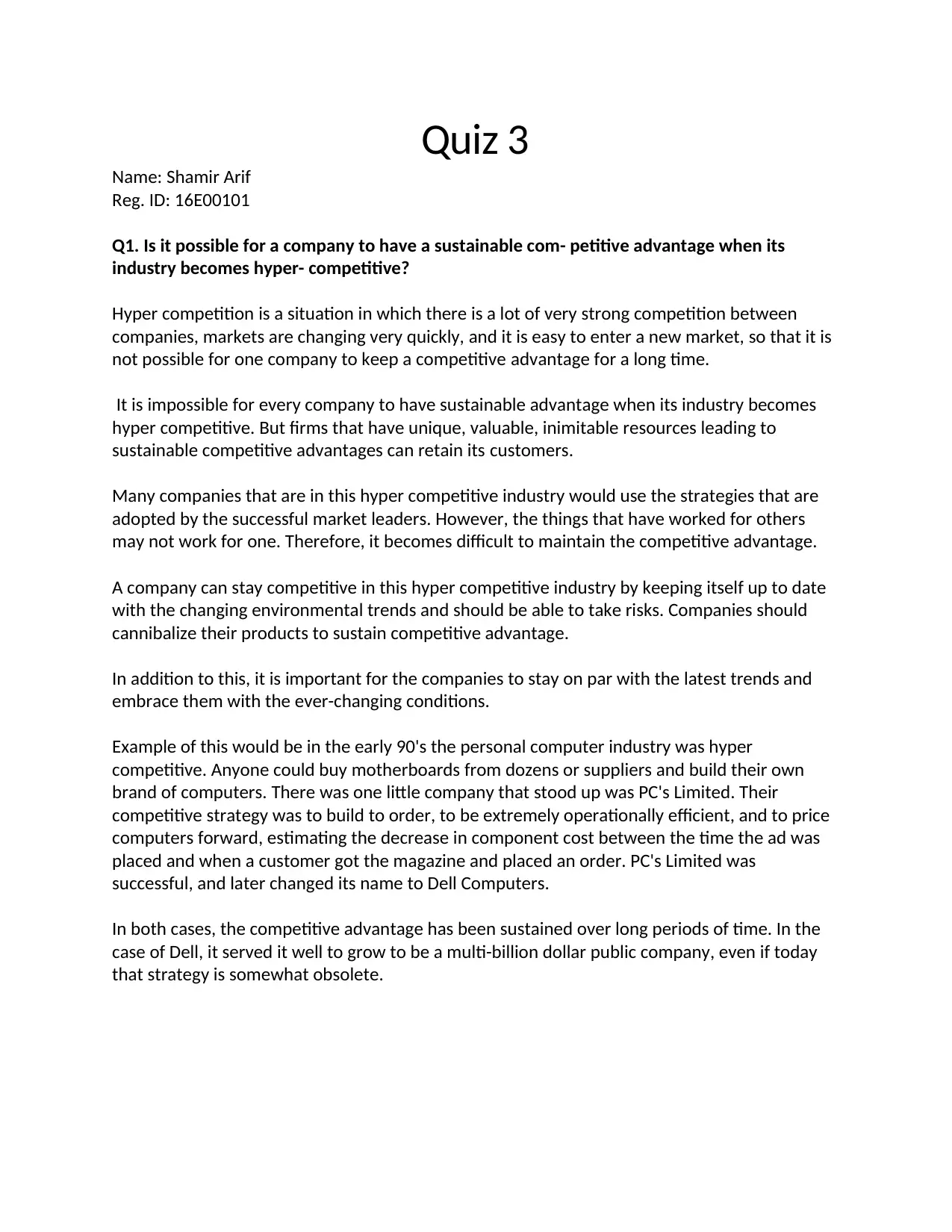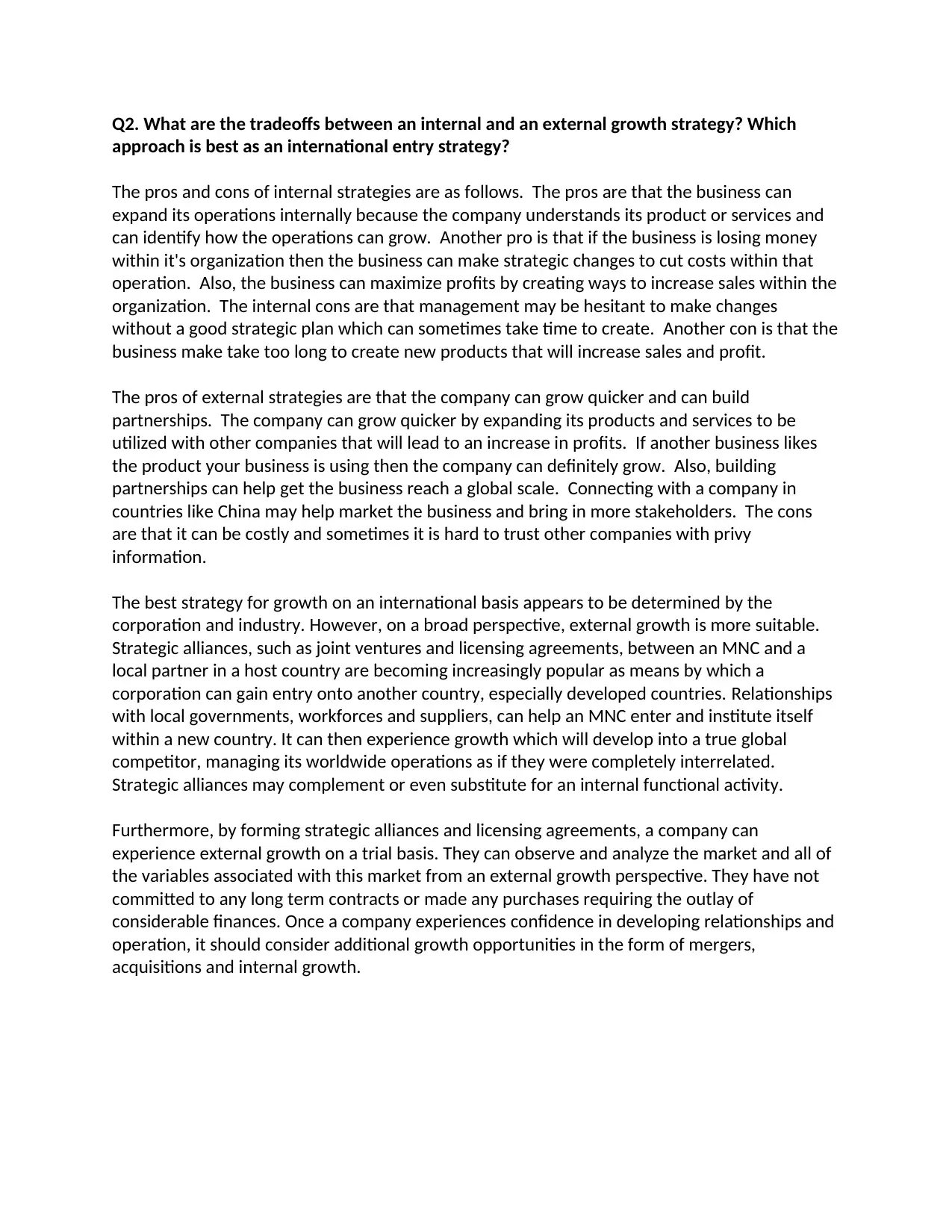Business Strategy Quiz 3: Hyper-competition and International Growth
VerifiedAdded on 2020/09/27
|2
|885
|420
Homework Assignment
AI Summary
This document presents the solutions to Quiz 3 on Business Strategy. The first question addresses whether a company can maintain a sustainable competitive advantage in a hyper-competitive industry. The solution argues that while a sustained advantage is challenging, companies with unique and valuable resources can retain customers. It uses Dell Computers as an example, highlighting the importance of adapting to changing trends and, in some cases, cannibalizing products. The second question explores the tradeoffs between internal and external growth strategies, concluding that external growth is often more suitable for international entry. It discusses the pros and cons of each approach, emphasizing the benefits of strategic alliances, such as joint ventures and licensing agreements, for entering new markets and building global competitiveness, while mitigating risks through trial partnerships before committing to long-term investments. This assignment is contributed by a student to be published on the website Desklib.
1 out of 2








![[object Object]](/_next/static/media/star-bottom.7253800d.svg)